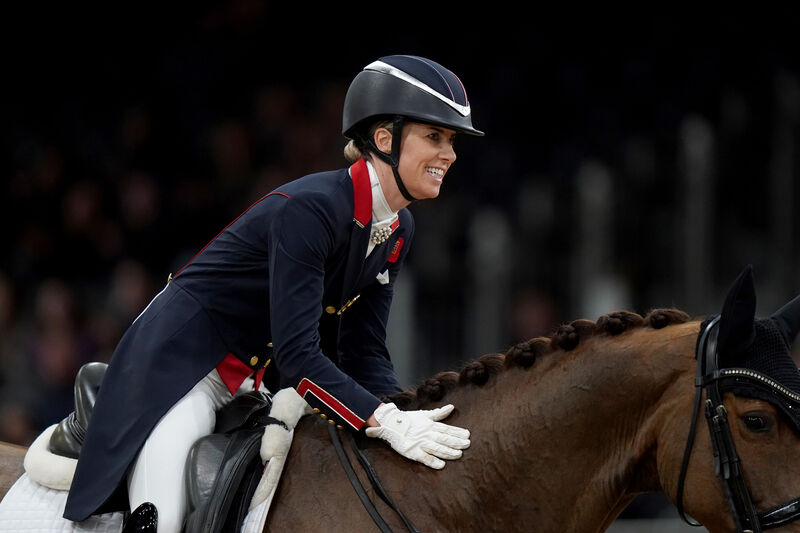
Today we start another new article series this time covering the Paralympics in Paris and this wonderfully innovative series is brought you you by the one and only Angela Lyons. Throughout this series Angela will Educate us, Inspire us and show us the behind the scenes journey of a Para Rider trying to get to the Paralympics. What we love about this is Angela isn’t just going to share her own story, there will be a range of article interviews with other para riders and some people in leadership in and around the team as the prepare to compete and get on the final team for the Paralympics. (Angela may be looking for a sponsor of this article series for any businesses out there who want to support her journey). To the business owners out there, don’t forget the theme of International Women’s Day (March 8th) is #InspireInclusion – this could be a fantastic series to sponsor aligning to Inspiring Inclusion.

Now we will hand it over to Angela for the first article of this series.
I’ve been part of Para Equestrian Ireland since 2010. I’m here to give you an insight into Para Dressage as Team Ireland get ready to send their team to compete amongst the world’s best in the incredible venue of Versaille.
Firstly, let me briefly explain the grading system:
In my case, I am a Grade IV Profile 26a-“4 limbs reduced in function, with trunk affected”,
As my disease is progressive and my joints strength and power have reduced so I have moved Profiles. I initially was a Grade 5 spot as I fell apart more, I’m now a Grade 4. I am continually on a 2 year Review, where the Classifiers monitor any degeneration.

THE TESTS.
Each competition is over 3 days.
First day is Team Test ( Grand Prix A)
Second day is Individual ( Grand Prix B)
Third day is freestyle- My favourite! But only the top 8 can compete in freestyle.
Grade 1 riders compete at walk only. Grade 2 riders compete at walk and trot. Grade 3 riders Compete at walk and trot with some lateral work. Grade 4 riders compete at medium level. Grade 5 riders compete at advanced medium level. Freestyles may include certain more difficult movements to add degree of difficulty to the test, which can give higher marks.
The dressage quality is very high. Tests are judged by top level, often list one Grand Prix Judges. These judges expect the same principles of dressage that would be in able bodied competition. The horse and test are judged as in able-bodied dressage and no” pity “is taken on the rider.
In order to assist riders there are many Compensatory Aids available depending again on your Grade and Profile.
Coming back to myself, I have a few compensatory aides. 2 whips(Essential at times!), A handhold (or “Jesus Strap”), Split reins (a bit like Pelham joiners), Loop Reins (gives me a more secure grip), Velcro Strap from stirrup to girth (to control a wayward leg).
I hope this gives you a little more insight into the ins and outs of Para Dressage.For me and I’m sure for other Para Equestrian riders, it’s about our abilities and not are disabilities.


Share
Your subscription is 100% Free for our first year, No credit card details required.

Charlotte Dujardin, a name synonymous with elegance and excellence in the equestrian world, now finds herself at the heart of

The world is currently rocked from the recent release of a video exhibiting clear animal abuse.. and I’m not going

The equestrian community is currently facing a critical moment following the recent revelations about Charlotte Dujardin. The video that surfaced